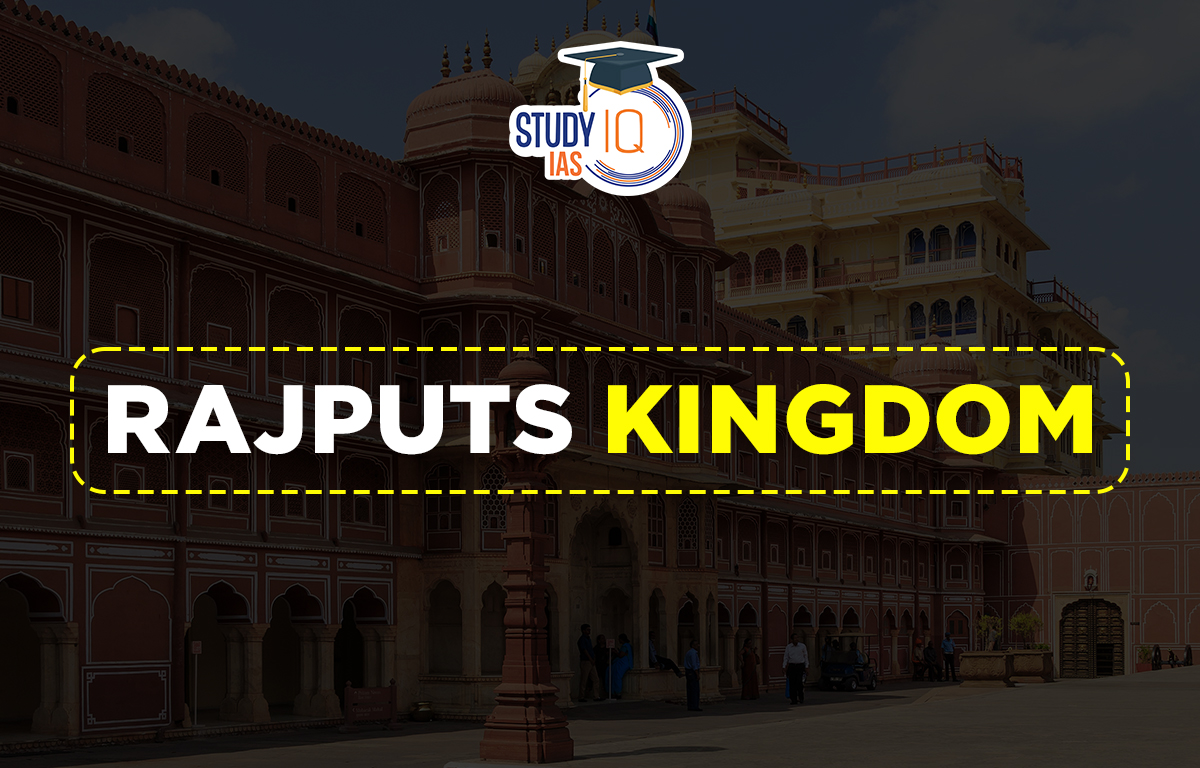Table of Contents
Rajputs Kindgom
The Rajput Kingdom existed from the 7th century until the 12th century, when it was conquered by Turko-Muslim forces. During the middle Ages, it flourished in central and northern India. In India’s history, the Rajput Dynasty played a crucial role. The history of the nation has been shaped by the presence of well-known and strong kings throughout its history.
A feudal organisation called the Rajput Kingdom promoted Hinduism, Buddhism, and Jainism. The regard they held for literature, art, and architecture was also quite great. The Rajput Dynasty, the history and genesis of Rajputs, the states created, and the type of society they ruled are all covered in the information below.
Rajputs Kingdom is the topic of Medival History for UPSC Exam Preparation. Candidate will find all the details about the Rajput Kingdoms in this article for UPSC Exam Preparations.
Read about: Awadh Kingdom
Rajputs Kindgom History
At the beginning of the Middle Ages, Simharaj, the creator of the city of Ajmer, established the Rajput Kingdom. The early mediaeval period (8th to 12th century) and the later mediaeval period are the two stages that make up the mediaeval era (12th-18th century). The Rajput Kingdom in the early mediaeval era begins with the end of the rule of Harsha and Pulakesin II. They ruled the nation for more than 500 years and made contributions to Indian history.
Rajputs Kingdom Origin
Discussions on the Rajputs’ origins are contentious. However, several historians have proposed specific ideas regarding the Rajputs’ ancestry in India. These include the mixed origin hypothesis, the agni kula theory, the foreign origin theory, the kshatriya origin theory, and the tribal origin theory. The Rajput dynasty is thought to have ruled throughout the early mediaeval era, or from 647 to 1200 A.D. After Harsha’s passing in the 12th century, their kingdom started to crumble.
The Hephthalites’ impact on the northern and western portions of the Indian subcontinent in the middle of the fifth century CE is when the Rajputs first appeared. The Gupta Empire collapsed in the 6th century after the incident. The invaders launched an attack against the empire. Some of the invaders assimilated into the local culture. However, the Tribals and the Nobles were separated into Kshatriyas and Hindus, and their adherents—including the Ahirs, Gujars, and Jats—were regarded as the Fourth Order.
Additionally, certain invading priests obtained the status of a Brahman while the others attained that of a Rajput. There are three distinct subgroups of Rajput ancestry: Suryavanshi, Chandravanshi, and Agnikula. However, they started to matter politically in the early seventh century.
Read about: Mysore Kingdom
Rajputs Kingdom List
Below given is the complete list of Rajputs Kingdom in details, Candidates can go through the list for UPSC Exam Preparation related to Rajputs Kingdom:
| Rajputs kingdoms | Capital | Founder |
| Chauhan/Chahaman of Delhi-Ajmer | Delhi | Vasudeva |
| Pratihara/Parihar of Kannauj | Avanti, Kannauj | Nagabhatt I |
| Pawar/Parmar of Malwa | Ujjain, Dhar | Seeak II ‘Sri Harsha’ |
| Chaulukya/Solanki of Kathiyawar | Anihalvada | Mularaja I |
| Rastrakuta of Malkhand | Malkhand/ Manyakheta | Dantidurg (Danti Varman II) |
| Chandela of Jejakabhukti | Khajuraho, Mahoba, Kalinjar | Nannuk Chnadela |
| Kalchuri/Haihaya of Chedi | Tripuri | Kokkala I |
| Gadhawal/ Rathore of Kannauj | Kannauj | Chandradeva |
| Tomar of surrounding areas of- Haryana and Delhi | Dhillika | Anangpal Singh Tomar |
| Guhilota/ Sisodiya of Mewar | Chittor | Bappa Rawal, Hammir I |
Read about: Maratha Empire
Rajputs Kingdom and Major States
The Rajput dynasty ruled a total of 36 Indian kingdoms. These clans’ principal States are listed below:
- The Palas of Bengal
- The Chauhans of Delhi and Ajmer
- The Rathors of Kanauj
- The Guhilas or Sisodiyas of Mewar
- The Chandelles of Bundelkhand
- The Paramaras of Malwa
- The Senas of Bengal
- The Solankis of Gujarat
Rajput Kingdom and Chauhans Kingdom
The Chauhans were the Gujara-Pratiharas’ feudatories. The Chauhans proclaimed Ajmer independent in 1101 A.D. But towards the beginning of the 12th century, they overcame the Paramaras and took control of Ujjain and Delhi. They moved their capital to Delhi after being captured. Prithviraj Chauhan was the most significant Chauhan king among all the Rajput kings. But upon his passing, the Chauhan dynasty lost strength.
Read about: Travancore Kingdom
Rajput Kingdom UPSC
The Rajput polities were constantly attacked by the Marathas and Afghans in the second half of the eighteenth century, but neither party was able to conquer the area for good. Thus, the Rajputs once had complete control over the region that stretched 900 kilometres from Delhi to Surat’s western shore. However, internal conflict prevented the Rajputs from solidifying their position, leaving them open to Maratha invasion. The Rajputs Kingdom is fully described in this article for UPSC exam preparation.


 Jallianwala Bagh Massacre, Date, History...
Jallianwala Bagh Massacre, Date, History...
 Important Lakes of India, State wise and...
Important Lakes of India, State wise and...
 Buddhism History, Origin, Sect, Councils...
Buddhism History, Origin, Sect, Councils...





















